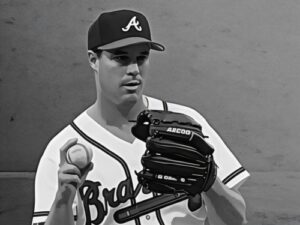Which late-season trade deadline acquisition had the biggest impact on a pennant race? The answer is most likely a starting pitcher, but if we look only at position players, Cesar Cedeno has an argument for that distinction.
The “trade deadline” deal only goes back to the mid-1980s, when Major League Baseball established the July 31 non-waiver trade deadline and the August 31 waiver deadline. Prior to that the trade deadline (waiver and non-waiver) had been June 15 for six decades. Subsequently, if a team in the pennant race wanted to bolster their team by trade, they did it in June.
In recent years the trade deadline has been shifted, so that it now lands on the final day of July (or the 30th if the final day is a Sunday). No trades are allowed after that deadline now, which removes the waiver-trade deadline that used to be at midnight on August 31.
Trades can heavily impact pennant races and the odds for teams to make the post-season or World Series, which is why sports bettors keep an eye on such things.
Cardinals Acquire Cedeno for 1985 Stretch Drive
The St. Louis Cardinals acquired Cedeno from the Cincinnati Reds on August 29th, 1985, a few days before the trade deadline. At the time, the team was only two games ahead of the Mets in the National League East. The Cardinals had a great young outfield: left fielder Vince Coleman, center fielder Willie McGee, and right fielder Andy Van Slyke. They didn’t get Cedeno to play the outfield, they got him to play first base. A week before the trade their starting first baseman and cleanup man, Jack Clark, suffered an injury. It wasn’t clear how long Clark would be out, but it was going to be weeks. When Whitey Herzog called Cesar to inform him of the deal, he said “Bring your first baseman’s mitt with you.” Cedeno didn’t have a first baseman’s glove, so he went to the store and bought one.
In his first week with the Cards, Cedeno had a hit in all seven of his games, even though Whitey called him off the bench as a pinch-hitter a few times. The team lost two of three to the Mets in Shea Stadium on September 10-12, falling one game out of first. The next day, Herzog put Cedeno at the cleanup spot and Cedeno had two hits and two RBIs to help the Redbirds beat the Cubs. The next day he had a hit and scored a run and the Cards won again, the following day at Wrigley Field, Cedeno went 5-for-5 with two doubles, a homer, and four RBIs to lead the team to another victory. He kept hitting and the team kept winning, rolling off 12 wins in 13 games. Cedeno hit .444 with 20 hits, five extra-base hits and 10 RBIs in that stretch. The Cardinals stretched their lead over the Mets to four games with a three-game series against New York at Busch Stadium looming in the final week. That’s when Clark returned from his injury and Whitey put him back in the lineup. Clark was rusty, didn’t hit a homer or have an RBI after he was re-inserted into the lineup. The Cardinals lost two of three to the Mets with Cedeno only appearing as a late-inning replacement in one of the games. The lead fell to two games. But Whitey came to his senses and started Cedeno in right field on the last Saturday of the season, needing a win to clinch the division. Batting behind Clark, Cedeno went 3-for-3, including a two-run homer in the seventh that iced the game.
After the trade to the Cardinals, the 35-year old Cedeno hit .434 in 28 games with four doubles, a triple, six home runs, and 19 RBIs. His legs were also reinvigorated, swiping five bases. His slugging percentage was a Ruthian .750 after joining his new team.
Forgotten by many, Cedeno’s production after he joined the Cardinals at the tail end of the 1985 season was critical in the team making the postseason, and eventually the World Series, where they lost in seven games to Kansas City. Cedeno is remembered mostly as one of the greatest Astros of all-time, but for a few weeks in ’85 he was a Redbird legend.






